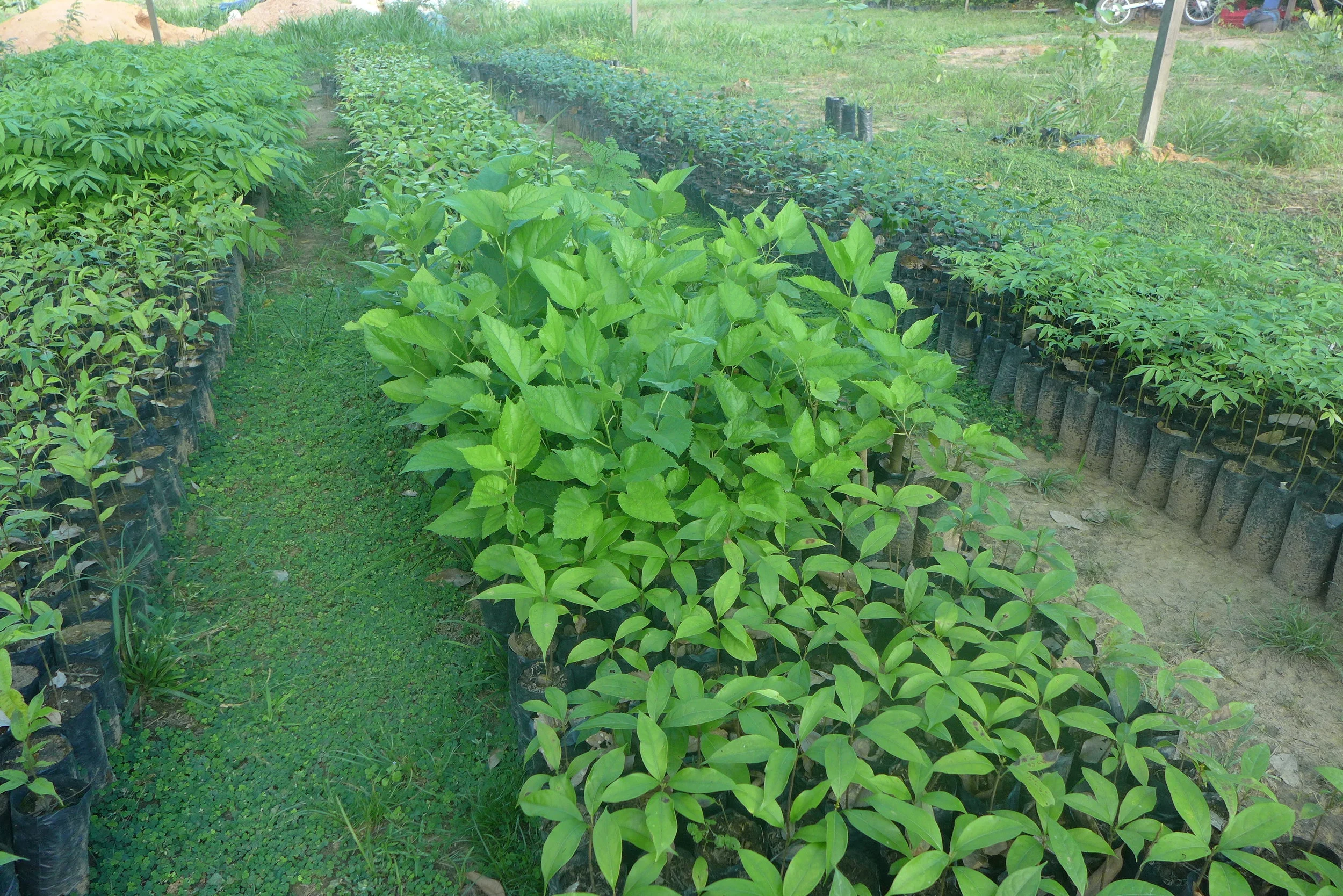Amazonian Regeneration in Action
The flower of Achiote, Bixa orellana, a native Amazonian tree that grows in degraded soils and gives edible and medicinal products.
The seedlings are strong and tall, and I can see satisfied faces and eager hands moving carefully to place these future giants into crates for transport. Today it’s ten species that are moving out – ten kinds of native trees of the Amazon that are as useful as they are endangered. A few are prized for their timber, and therefore under pressure from constant culling in the wild forest. Some are valued for their fruits. Others are medicinal. A couple of amazing, multipurpose species are used for all of these things.
These trees were born and raised in Camino Verde’s forestry nursery at La Joya, Madre de Dios, Peru. A nursery that produces over 100 species of trees a year, it is remarkable for its diversity and for its steady output – less than two years after the nursery’s founding over 25,000 seedlings a year will find a home in future forests, replacing areas that were clearcut for agriculture, for ranching, and for gold mining.
The heroes of our story, the trees leaving the nursery today will intervene in the regreening of one of the Amazon’s most acute wounds. Illegal and legal gold mining alike have radically altered the uninterrupted canopy of Madre de Dios, a region often considered to be the most significant area of intact tropical forest left in the world.
Camino Verde La Joya nursery housed over 100 species of trees in its first year.
The threat of mining is unlike agriculture in that the devastation is much more permanent. Whereas a farm that goes fallow after harvest will grow back quickly in a tangle of secondary forest locally called purma, the degradation of forest landscapes wrought by mining goes deep into the subsoil. Trees are cleared, soils are dredged up and returned in a contaminated form, now carrying diesel fuel and heavy metals, especially mercury. The resulting moonscape is inhospitable to all but the hardiest of organisms, whether microbe or plant.
So there’s something else that’s extraordinary about the seedlings leaving the nursery today. They can grow where others cannot. They can work their roots into sterile and polluted soils, even into the gravel piles left behind by dredgers and pumps. These trees are expert regenerators; in addition to their other uses and benefits, they will bring back life-giving organic matter in the form of leaf litter and make the soil livable again for a variety of organisms, including the region’s astonishing diversity of birds, amphibians, insects, and mammals.
It’s a process that calls to mind the establishment of life on our planet. Before there was an oxygen-rich atmosphere enveloping the Earth, plants were working to make a stark landscape congenial to life. In addition to generating the oxygen we now breathe, long ago plants were enacting the conditions necessary for animals of all kinds. In the Amazon of Peru, we get to watch this process unfold once more.
It inspires optimism. The Earth can regroup, recover, regenerate. Especially if we lend it a helping hand. We know the Amazon can be restored – even in our lifetime. The protagonists of this heroic process, trees are silent and seemingly immobile, yet we ignore their power at our own peril. With allies like these, capable of transforming desolation into exuberance, we stand a real chance of bringing our forests, and our planet, back from the brink.
Doing it better means doing it together. Your enthusiasm for this work is what literally sustains us and allows us to continue with the labor of love of reforesting the Amazon. Thank you for your generosity in contributing – it means more trees planted, more hope seeded, a better chance for the rainforest and the people who rely on it.
Before signing off, I’d like to extend a special thanks to CINCIA, a research group from Wake Forest University who are our key strategic partners in bringing more trees to mined areas. They also provided us with the beautiful drone image you see below.
Drone photograph of mixed agroforestry systems and natural regeneration at Camino Verde Baltimori reforestation center.
One of our most important tree planting partners, the Center for Amazonian Scientific Innovation, CINCIA, of Wake Forest University.





